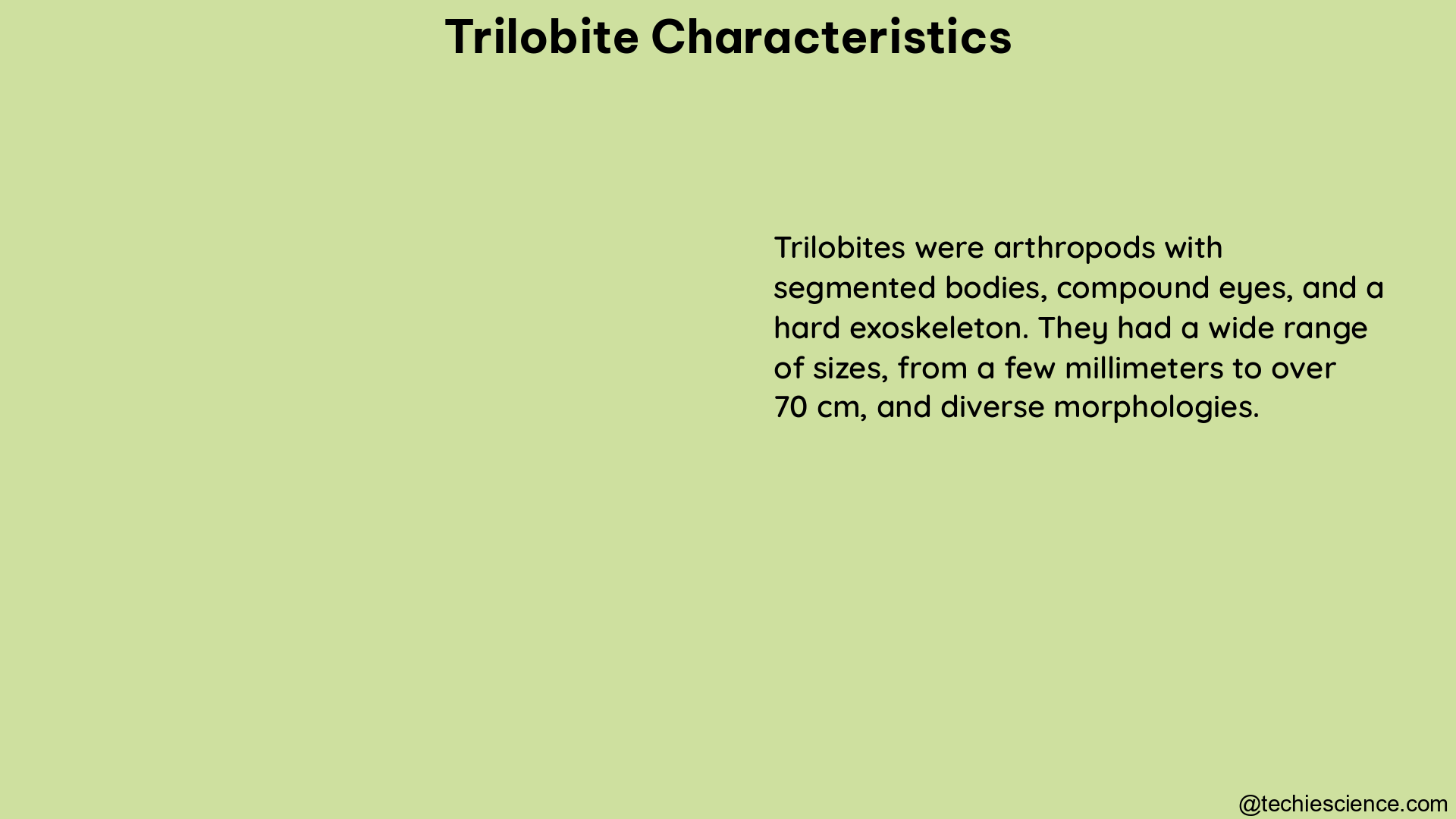Trilobites, the iconic arthropods that dominated the ancient seas, have long captivated the minds of paleontologists and enthusiasts alike. These remarkable creatures, with their distinct segmented bodies and compound eyes, offer a wealth of information about the evolution and ecology of the Paleozoic era. In this comprehensive blog post, we delve into the intricate details of trilobite characteristics, exploring the various methods used to quantify and analyze these fascinating fossils.
Morphometric Analysis: Unlocking the Secrets of Trilobite Body Shapes
Morphometric analysis is a powerful tool that allows researchers to quantify the shape and size of trilobite body parts with remarkable precision. By employing geometric morphometrics and landmark acquisition techniques, scientists have been able to analyze the intricate morphology of trilobite cephalons (head shields) and pygidia (tail shields), revealing insights into the adaptations and functional needs of these ancient arthropods.
One groundbreaking study, published in the journal Nature, utilized these modern morphometric-based approaches to quantify the impacts and responses of marine ecosystems to large-scale changes throughout the Paleozoic era. The researchers developed a dynamic and collaborative database called TriloMorph, which serves as a comprehensive repository for morphological information on trilobites. This database promotes inclusive and sustainable collaboration among researchers, enabling them to explore the nuances of trilobite evolution and ecology in unprecedented detail.
Moulting Behavior Variability: Insights into Trilobite Life Cycles

Trilobite moulting behavior is another fascinating aspect of their biology that can be quantified and analyzed. A study published in Palaeontologia Electronica delved into the significant intraspecific and interspecific variability in trilobite moulting behavior, both taxonomically and temporally throughout the Palaeozoic.
This groundbreaking research presented the first comprehensive quantification and detailed exploration of total-group trilobite moulting behavior, assembling the largest dataset on trilobite behavior ever collected. By analyzing the variation in trilobite moulting patterns and tracking broad-scale trends in the occurrence of their characteristic moulting disarticulations, the researchers gained valuable insights into the life cycles and adaptations of these ancient arthropods.
Evolutionary Rates: Unraveling the Timing of Trilobite Diversification
Evolutionary rates are another crucial aspect of trilobite characteristics that can be quantified and analyzed. A study published in the Proceedings of the National Academy of Sciences delved into the evolutionary rates of trilobites, revealing remarkable insights into the timing and pace of their diversification.
The researchers found that evolutionary rates for discrete, meristic, and continuous traits were remarkably consistent across the early, middle, and late Cambrian periods. By estimating the basal divergence in Trilobita to be within the Terreneuvian, with an upper 95% highest posterior density (HPD) interval of 541.3 Ma, the study provided a conservative maximum age for the emergence of this iconic group of arthropods.
Interestingly, the study also suggested that faster evolutionary rates would have allowed for the initial phenotypic disparity of trilobite fossils to be established in a relatively short period of time. This finding sheds light on the rapid diversification and adaptive radiation of trilobites during the Cambrian explosion, a pivotal event in the history of life on Earth.
Trilobite Characteristics: A Multifaceted Approach
The quantification and analysis of trilobite characteristics using morphometric analysis, moulting behavior variability, and evolutionary rates have provided a wealth of information about these ancient arthropods. These methods have allowed researchers to uncover the intricate details of trilobite biology, ecology, and evolution, shedding light on the complex interplay between form, function, and adaptation.
By leveraging these cutting-edge techniques, paleontologists have been able to track the impacts and responses of marine ecosystems to large-scale changes, understand the variability in trilobite life cycles, and elucidate the timing and pace of their diversification. This multifaceted approach has not only deepened our understanding of trilobites but also has broader implications for the study of macroevolutionary and macroecological patterns and processes.
As we continue to explore the rich fossil record of trilobites, the application of these quantitative methods will undoubtedly yield even more fascinating insights, further expanding our knowledge of these remarkable creatures and their role in the history of life on our planet.
References:
- Trilobite moulting variability – Palaeontologia Electronica, https://palaeo-electronica.org/content/2019/2489-trilobite-moulting-variability
- Trilobite evolutionary rates constrain the duration of the Cambrian – Proceedings of the National Academy of Sciences, https://www.pnas.org/content/116/8/2856
- A dynamic and collaborative database for morphogeometric information of trilobites – Nature, https://www.nature.com/articles/s41597-023-02724-9

Hi….I am Shravanthi Vikram, I have completed my master’s in Bioinformatics and have 10 years of teaching experience in Biology.
Let’s connect through LinkedIn-